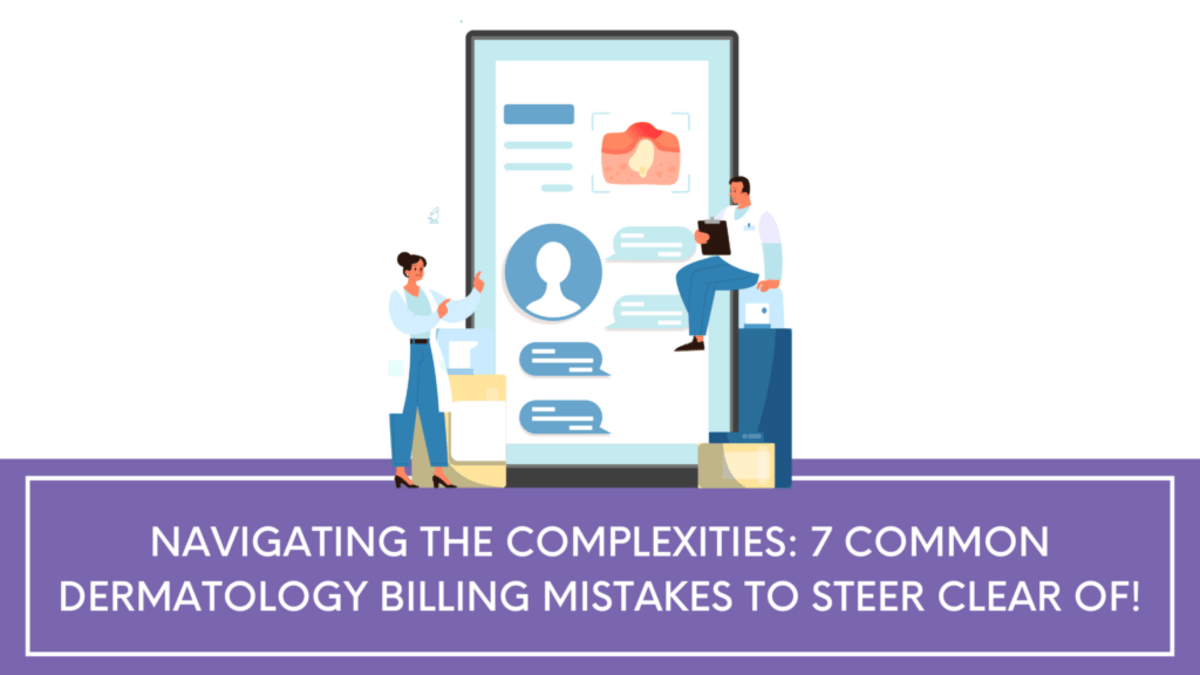Dermatology practices play a crucial role in diagnosing and treating a wide range of skin conditions, from common ailments to complex diseases. However, alongside providing high-quality care, dermatologists face the daunting task of navigating the intricacies of medical billing, which presents unique challenges in this specialized field. In this article, we delve into some of the common challenges in dermatology billing and offer strategies to overcome them, ensuring financial viability and operational efficiency for dermatology practices.
1. Coding Complexity
One of the primary challenges in dermatology billing stems from the complexity of coding skin-related procedures and treatments. Dermatologists must accurately document and code various services, including biopsies, excisions, lesion removals, and cosmetic procedures, using specific CPT (Current Procedural Terminology) and ICD-10 (International Classification of Diseases) codes.
Overcoming Strategy: Invest in ongoing staff training and education to ensure proficiency in coding guidelines and updates. Utilize electronic health record (EHR) systems with built-in coding assistance and templates tailored to dermatology procedures. Regularly audit coding practices to identify errors and areas for improvement.
2. Prior Authorization and Insurance Verification
Prior authorization requirements and insurance verification processes can be time-consuming and cumbersome for dermatology practices. Obtaining pre-authorization for procedures and treatments, verifying patients’ insurance coverage, and navigating payer policies and restrictions add administrative burden and delay reimbursement.
Overcoming Strategy: Develop streamlined processes for prior authorization and insurance verification, leveraging technology solutions such as electronic eligibility verification tools. Establish clear communication channels with payers to expedite authorization requests and resolve coverage issues promptly. Delegate administrative tasks to trained staff members to free up providers’ time for patient care.
3. Documentation and Compliance
Comprehensive documentation is critical for accurate billing and compliance with regulatory requirements in dermatology. Ensuring that medical records contain detailed descriptions of skin conditions, treatment plans, and procedural notes is essential for justifying the medical necessity of services and avoiding audit penalties.
Overcoming Strategy: Implement standardized documentation templates and protocols tailored to dermatology encounters to capture relevant information consistently. Train providers on documentation best practices, emphasizing the importance of specificity and completeness. Regularly review documentation for compliance with coding and billing guidelines.
4. Denials and Rejections
Dermatology practices often encounter claim denials and rejections from payers, leading to delayed or reduced reimbursement. Common reasons for denials include coding errors, lack of medical necessity documentation, and eligibility issues, requiring prompt resolution to prevent revenue loss.
Overcoming Strategy: Implement robust denial management processes to identify, appeal, and resolve claim denials efficiently. Conduct root cause analysis to address underlying issues contributing to denials, such as coding inaccuracies or incomplete documentation. Leverage data analytics tools to track denial trends and implement corrective actions.
5. Patient Billing and Collections
Collecting patient payments for dermatology services can be challenging, particularly for cosmetic procedures or elective treatments not covered by insurance. Balancing the need to communicate transparently with patients about their financial responsibilities while ensuring timely payment collection is essential for maintaining financial health.
Overcoming Strategy: Offer patient-friendly billing options, such as payment plans or online payment portals, to facilitate timely payment and reduce outstanding balances. Provide clear, upfront estimates of out-of-pocket costs for elective procedures to set patient expectations. Train front-office staff to communicate effectively with patients regarding billing inquiries and payment options.
Conclusion
While dermatology billing poses unique challenges, proactive strategies and effective management practices can help overcome these obstacles and ensure financial success for dermatology practices. By investing in staff training, optimizing coding and documentation processes, streamlining prior authorization and insurance verification, implementing robust denial management procedures, and enhancing patient billing practices, dermatologists can navigate the complexities of billing with confidence. By addressing these challenges head-on, dermatology practices can focus on delivering exceptional patient care while maintaining financial viability in an ever-evolving healthcare landscape.





